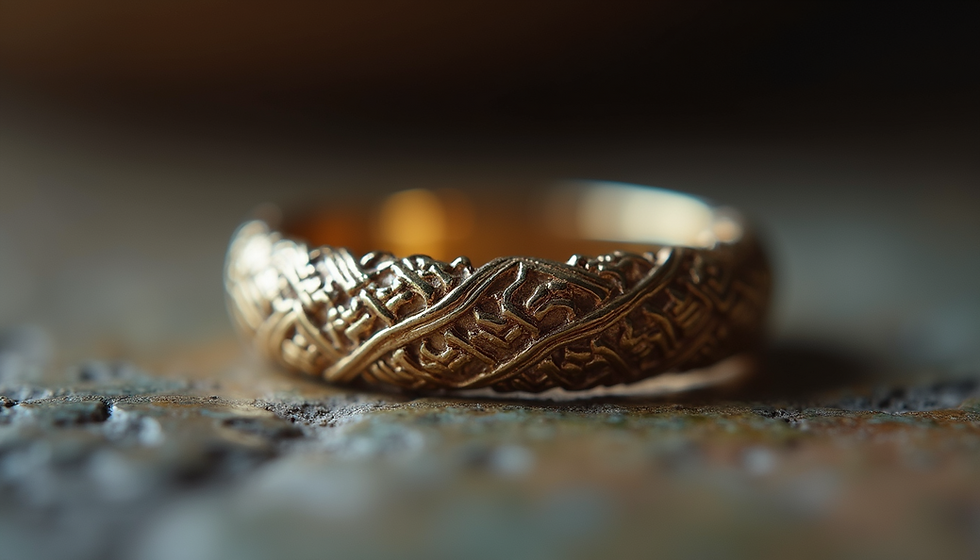The Fascinating World of Vintage Plastic Action Figures: Exploring the 1950s and 60s Collections
- Mark Holderfield
- Dec 1, 2023
- 4 min read
Collecting plastic action figures such as army men, cowboys and astronauts from the 1950s and 60s is a hobby that brings back fond memories for many baby boomers. These toys, manufactured by companies like Marx and Tim Mee, were popular among children during this time period. The small, intricately detailed figures allowed children to create their own battles and adventures, sparking their imaginations and creativity.
Many collectors today seek out these vintage toys as a way to relive their childhood memories. Some collectors focus on specific sets or themes, such as World War II soldiers or space exploration. Others collect a wide variety of figures, drawn to the nostalgia and sense of history these toys represent.
Despite their age, these plastic toys continue to capture the hearts of collectors and enthusiasts. They serve as a reminder of a simpler time, before the advent of video games and smartphones, when children used their imaginations to create their own fun.

Plastic army men were sold in plastic bags or buckets, and often include different colors such as green, tan, or gray, to represent opposing sides. They are equipped with a variety of weapons, typically from World War II to the current era, often depicting the 1964 Vietnam-era M-16 rifle with fixed M7 bayonet. These include rifles, machine guns, submachine guns, shotguns, sniper rifles, pistols, grenades, flamethrowers, mortars, and bazookas. They may also have radio men, binocular scouts, and minesweepers. The traditional helmets are the older M1 "steel pot" style that were issued to US soldiers during the middle to late 20th century. Typical accoutrements depicted are often 1960s-era M1911 style pistols, ammunition pouches, and water canteens. Army men were sometimes packaged with additional accessories including tanks (often based on the M48 Patton tank), jeeps, armed hovercraft, half-tracks, artillery, flags, army trucks, helicopters, fighter jets, landing craft and fortifications. Their vehicles are usually manufactured in a smaller scale, to save on production and packaging costs.
Beginning in the early 1950s, Louis Marx and Company sold boxed sets of figures and accessories called playsets, such as "US Army Training Center" and the later "Battleground" sets. A rival manufacturer, the Multiple Plastics Corporation (MPC) also sold plastic figures in various colors with different separate accessories, so the same figures could be kitted out as soldiers (green), farmers, pioneers or cowboys (brown), policemen (blue), ski troopers (white) spacemen (various colors), or American Civil War soldiers in blue and gray.
The economy of plastic sold in bulk, popularity of army men, and competition with manufacturers led to army men being sold in large bags by Marx, Tim-Mee Toys and MPC for as little as a penny a piece in the mid-1960s. During this time, Marx gave the American army men actual enemy soldiers to fight such as German soldiers (molded in gray) in their 1962 "Army Combat" set and Japanese soldiers (molded in yellow) in their "Iwo Jima" set that was released in 1963. In 1965, a "D-Day" Marx set featured Allies such as French (horizon blue), British (khaki), and Russians. One of their last and largest playsets was the multi-level "Fortress Navarone" mountain set based on The Guns of Navarone, which was available in the 1970s and pitted World War II Americans against Germans.
During the Vietnam War, sales and availability of military toys began to decline alongside the unpopularity of the war and the higher prices of plastic from the 1973 oil crisis. Since 1975 many manufacturers of plastic soldiers in Europe and US closed, for example John Hill & Company, Reamsa, Louis Marx and Company, and Dinky Toys.
Marx Toy Company was a popular toy manufacturer in the United States during the mid-twentieth century, producing a variety of toys that were beloved by children across the country. While many people associate Marx with their iconic toy trains, the company also produced a number of other toys, including cowboy and Indian figures, as well as astronaut figures.
The cowboy and Indian figures were a popular choice for children who loved to play out wild west scenarios, complete with shootouts and cattle drives. These figures were made with great attention to detail, with colorful clothing and accessories that brought the characters to life. The astronaut figures, on the other hand, were a nod to the space race that was taking place at the time. Children could imagine themselves exploring the final frontier with these toys, which were often accompanied by spaceships and other space-themed accessories.

Overall, Marx Toy Company was known for producing high-quality toys that were both fun and educational. Whether children were playing with trains, cowboys, Indians, or astronauts, they were sure to have a good time while developing their imaginations and creativity.
Today most army men are made inexpensively in China and do not include the extensive accessories that were common in Marx playsets. They are also smaller on average, often not much more than 2.5 cm (one inch) high. Most of these figures are generic imitations of model figure sets from such companies as Airfix and Matchbox. They vary widely in quality.






Comments